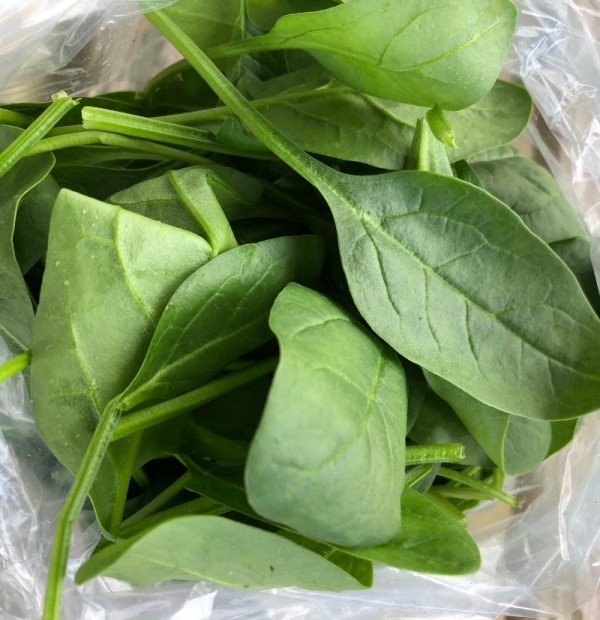SPINACH

Everyone loves a good spinach salad, but sometimes eating it raw isn't the best way to get all of its goodness. Raw spinach and other greens in the same family (beet greens, chard, and even lamb’s quarters) are all high in oxalic acid. This means that, when eaten raw, these greens interfere with calcium absorption. Oxalic acid breaks down when cooked, so it’s best to eat spinach in a wilted salad or cooked so you can absorb all the good vitamins and minerals it has to offer.
Spinach is a very tender and moist green. Cook it lightly, steamed or sauteed with just the water from washing the leaves for a couple of minutes. For the simplest spinach, pour off any liquid from cooking and add a drizzle olive oil and a little lemon and serve. For other ways of preparing, remove from pan and put in colander to drain water out of leaves. These wilted leaves can then be added to a bechamel sauce for creamed spinach or go back in the pan with some olive oil, raisins, and nuts for Roman style spinach, or into a casserole. Draining off excess water and not overcooking is the key to enjoying fresh, vibrant spinach.
STORAGE: For optimum storage life, do not wash the spinach until just before you are ready to use it. Line a clean plastic container with a paper towel. Remove dry spinach from the bag you receive it in and layer it gently in the container. Be sure to use a container that is large enough so that the leaves are not jam-packed. Place another paper towel on top and close the container. Store the spinach in the crisper drawer of your refrigerator for up to 10 days. This method of storage also works well for salad mix, arugula, and other tender greens!
RECIPE: Saag Tofu (Tofu with Spinach, Ginger, Coriander, & Turmeric) by Martha Rose Schulman
Ingredients:
- ¾ pound firm tofu, cut into 1-inch cubes
- 2 tablespoons canola oil
- ½ cup coarsely chopped shallot or red onion
- 4 lengthwise slices peeled fresh ginger (2 inches long, 1 inch wide, 1/8 inch thick), coarsely chopped
- 1 teaspoon cumin seeds
- ½ teaspoon fennel seeds
- 2 whole dried red chilies, like Thai, cayenne or arbol
- 1 tablespoon coriander seeds, ground
- Salt to taste
- ¼ teaspoon cayenne
- ¼ teaspoon ground turmeric
- 1 ½ pounds fresh spinach, stems trimmed at the end and washed in 2 changes of water, or 12 ounces baby spinach, rinsed
- ½ cup drained yogurt
- ¼ teaspoon cornstarch
Method:
- Drain the tofu on paper towels. Heat 1 tablespoon of the oil over medium-high heat in a wok or a large, heavy lidded skillet and add the tofu. Stir-fry until golden brown and remove from the heat.
- Combine the shallot or onion and the ginger in a food processor or mini-chop and blend until finely minced, almost a paste.
- Heat the remaining oil over medium-high heat in a wok or skillet and add the cumin seeds, fennel seeds and whole chiles. Cook, stirring, for about 15 seconds, or until the spices are fragrant and reddish-brown. Add the onion and ginger and stir-fry until it is lightly browned, about 3 minutes. Add the coriander, salt, cayenne and turmeric, stir for about 10 seconds and add the spinach in batches, adding the next batch after the first batch wilts and stirring and scraping the bottom of the pan to deglaze.
- Stir in the tofu, cover, reduce the heat to medium-low and simmer, stirring occasionally, for 2 to 3 minutes, until the spinach is uniformly wilted and the tofu is warmed through.
- Whisk the cornstarch into the yogurt. Remove the pan from the heat, remove the chilies, and stir in the yogurt. Taste, adjust salt and serve with rice or other grains.
- Advance preparation: The browned tofu will keep in the refrigerator for a few days, but the dish is best made just before serving.